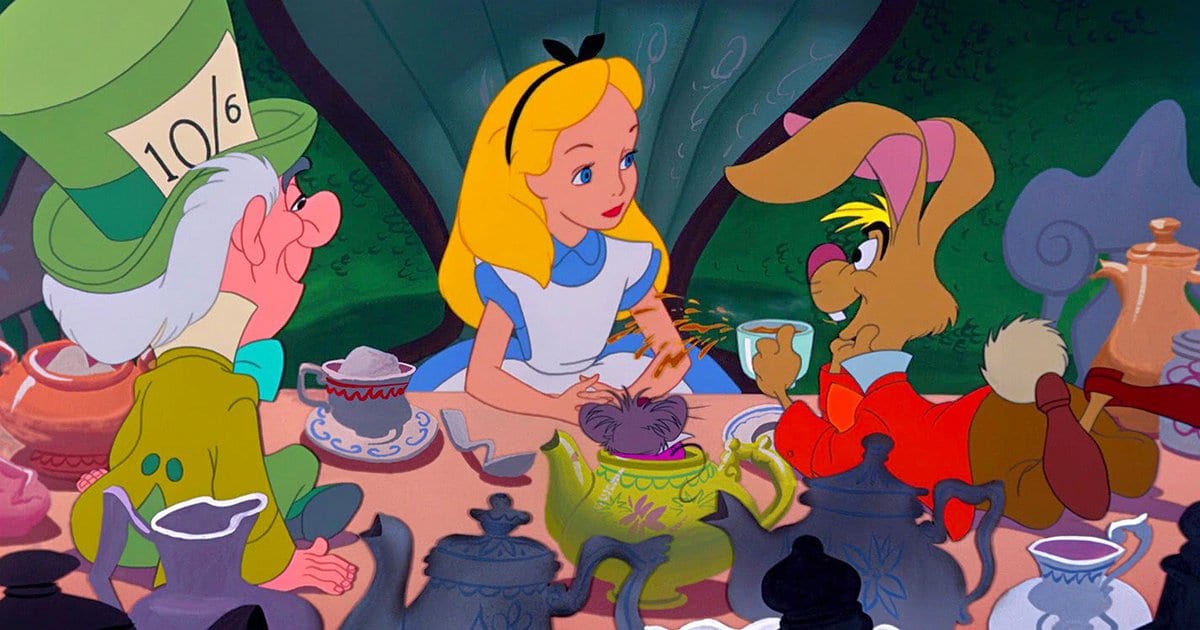I think it would be fair to say that for many of us, our first exposure to Lewis Carroll’s Alice books was through the 1951 animated Disney film. Although it received middling critical reception at the time of release, the movie has since been vindicated as a classic, and is one of the most popular adaptations of Carroll’s text. In fact, the movie has for many people superseded the original text, at least in terms of the recognizable images that the public associates with the phrase ‘Alice in Wonderland’.
For most people, especially Americans, it is hard to disassociate the character of Alice from English actress Kathryn Beaumont’s stuffy and perpetually annoyed upper-class performance, or to separate the Mad Hatter from the cartoon’s bucktoothed little man who speaks with Ed Wynn’s distinctive vocal patterns. The phenomenon of an adaptation displacing the original in the public consciousness is extremely interesting to me. This is often brought up about Disney, and to be fair, their movies do often replace their source material in the minds of the public… after all, when was the last time you saw a version of Cinderella in which she received a dress from a tree enchanted by her mother’s spirit rather than a fairy godmother? But this happens extremely often with any adaptation of a popular book. In adaptation, things are added or removed, and many times people have seen the adaptation but not the original text.

My theory as to why elements from visual adaptations tend to stick in the public consciousness more than the books they’re based on do is that people remember visual images more than the images they conjure up when reading. In a way, movie adaptations do part of the work for you — Especially for a world as fantastic and otherworldly as Wonderland, it might be hard for a reader to conceptualize the images that Carroll describes. But in a visual medium, part of the work is already done for you. It might be a more passive form of consuming entertainment, but if the adaptation is done well, the images do line up well with what is described in the book.
Most colorized versions of John Tenniel’s illustrations of the Alice books depict Alice as being a blonde and wearing a light blue dress. The real-life Alice Liddell was a brunette, and some versions of the illustrations show Alice in a yellow dress, but for the most part, the blonde-with-blue-dress image is codified as Alice’s standard look. The Disney version used this version of Alice as their starting point, but other adaptations, such as the 1985 miniseries, have Alice in a yellow dress. Although he was not the only artist to take a crack at depicting the famous scenes in the books, Tenniel’s illustrations have become associated with the Alice books, and because of a derth of description in the text itself, most of our perception of what things looked like in the stories was informed by these illustrations along with the Disney film. In fact, Tenniel’s version of Alice has become so famous that in England, black headbands are often colloquially referred to as ‘Alice bands’.
